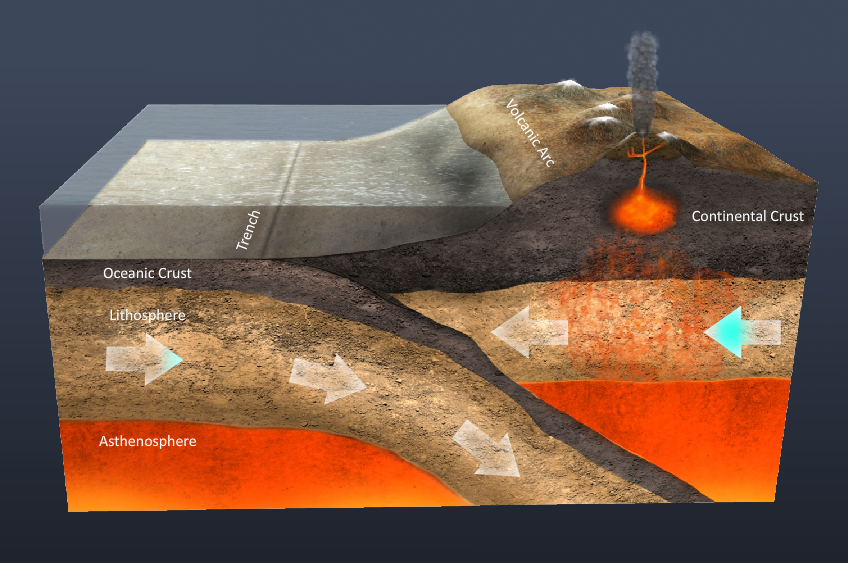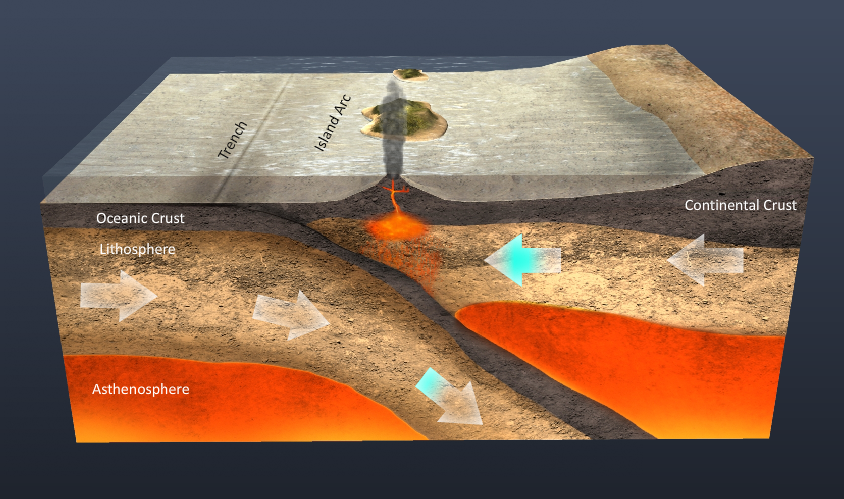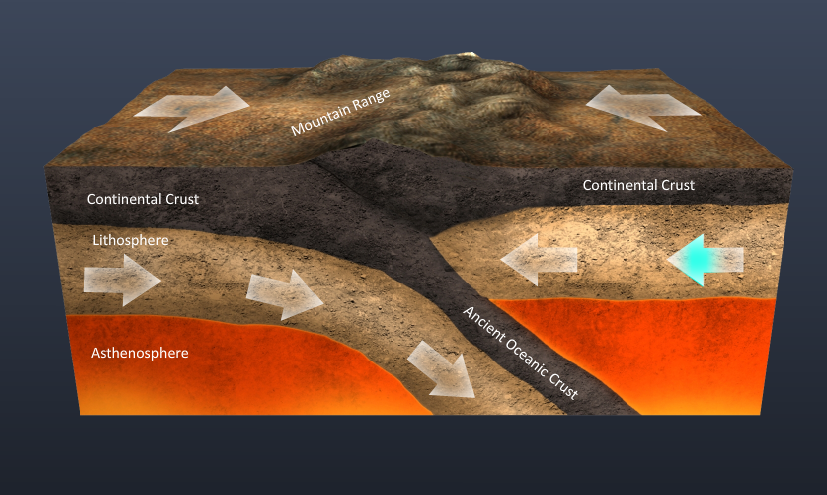A convergent boundary represents an area where two plates are moving toward one another, or converging. For example, a collision between plates of oceanic crust and continental crust will result in the denser oceanic crust sliding under the lighter continental crust. An area where one plate is forced under another as a result of a collision is known as a subduction zone. A deep ocean trench usually forms where one plate descends under another one. The Andes mountains in South America, for example, were formed as a result of the Nazca plate colliding with, or being subducted under the South American plate. Convergent boundaries are also known as destructive margins because crust is lost as a result of the plate interaction.
Two plates of oceanic crust can also collide. In addition to an oceanic trench, a series of volcanic islands known as an island arc results from this collision. The Lesser Antilles (i.e., U.S./British Virgin Islands, Barbados, Grenada, etc.) in the Caribbean were formed this way when crust from the Atlantic Ocean in the North American and South American plates was subducted under the Caribbean plate.
Two plates of continental crust can also converge. The Himalayan Mountains, for example, were formed as a result of the northern part of the Australian-Indian plate being subducted under the Eurasian plate.
Bye-bye Mediterranean
At some time in the future, the Mediterranean Sea will completely disappear. This is because the African plate is colliding with the Eurasian plate. The northern part of the African plate, which is part of the seafloor of the Mediterranean, is slowly being subducted under the Eurasian plate. Millions of years in the future, the Mediterranean will have completely disappeared as a result of this collision.Converging Plates and Oceanic Trenches
Oceanic trenches are often formed when two plates collide.
- Click here to see a convergent boundary off the coast of Japan.
- What two plates are converging here? The Okhotsk Plate and the Pacific Plate are converging here.
- What oceanic trenches were formed as a result of these two colliding plates? The Japan Trench and the Kuril Trench were formed as a result of this convergence.
- Rotate the globe and find at least two other areas where convergent plates have produced an oceanic trench.
- Identify the oceanic trenches produced as a result of these collisions. Possible answers include the Aleutian Trench, the Tonga Trench, and the Middle American Trench.


